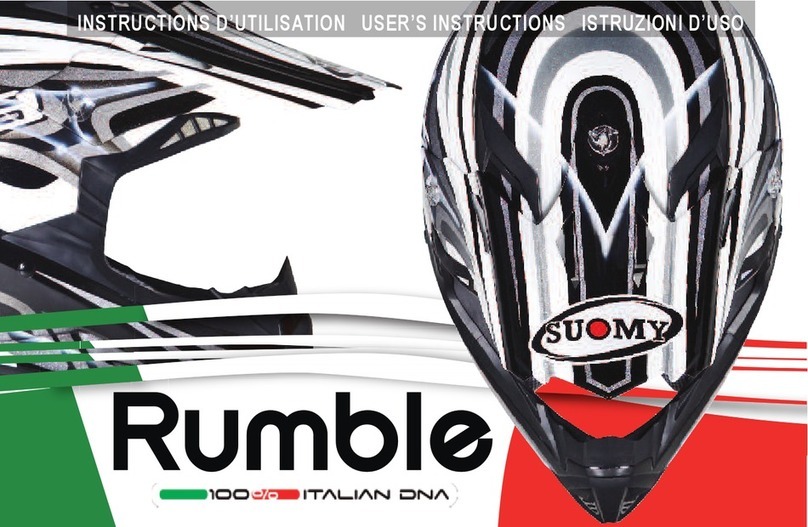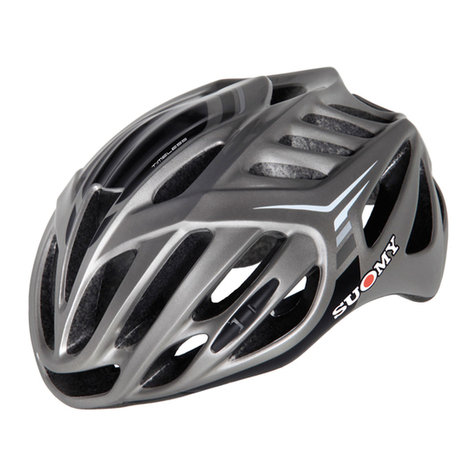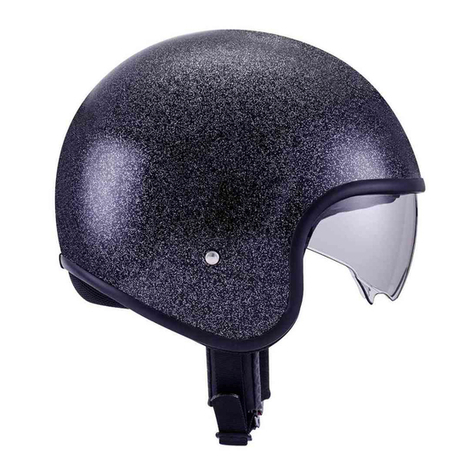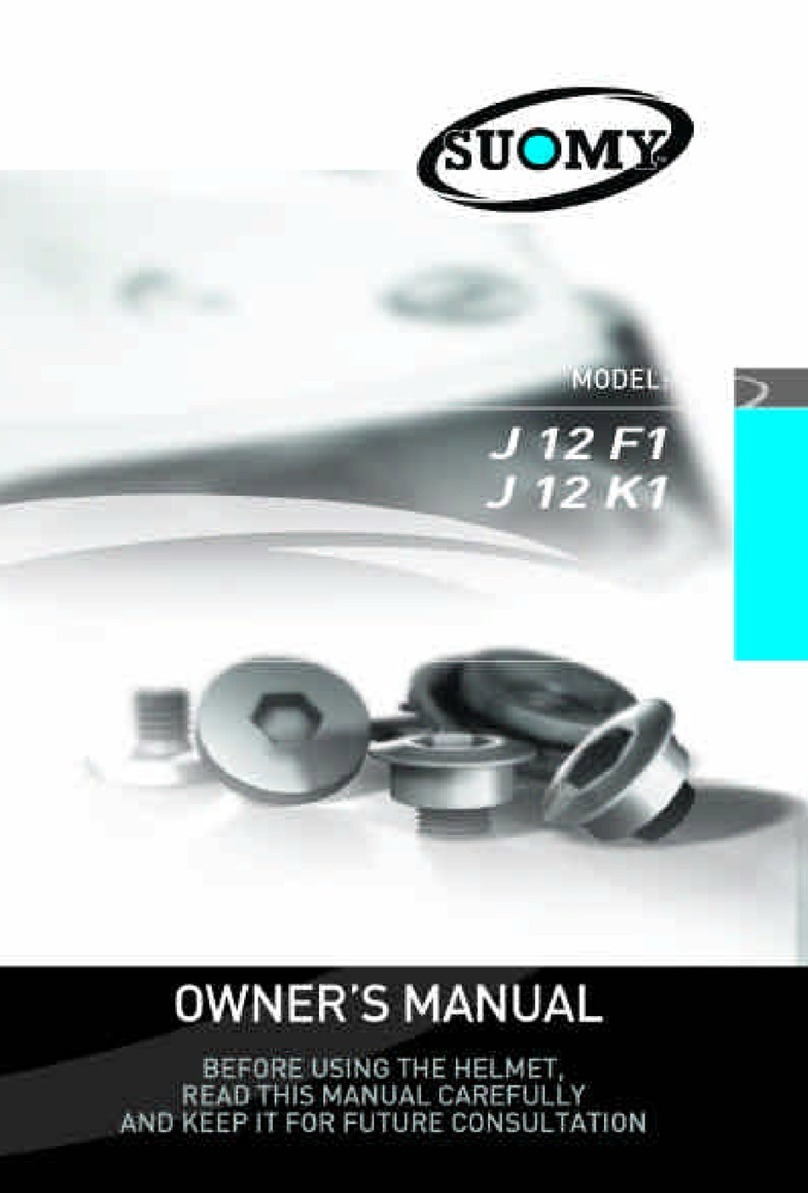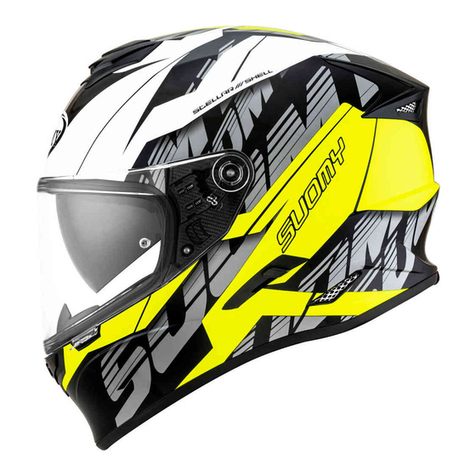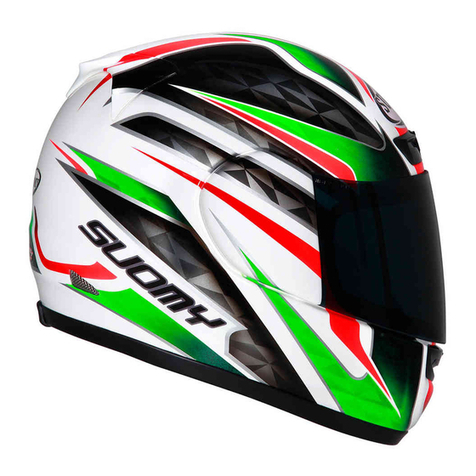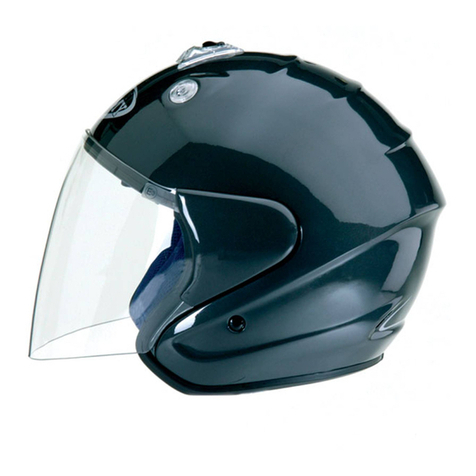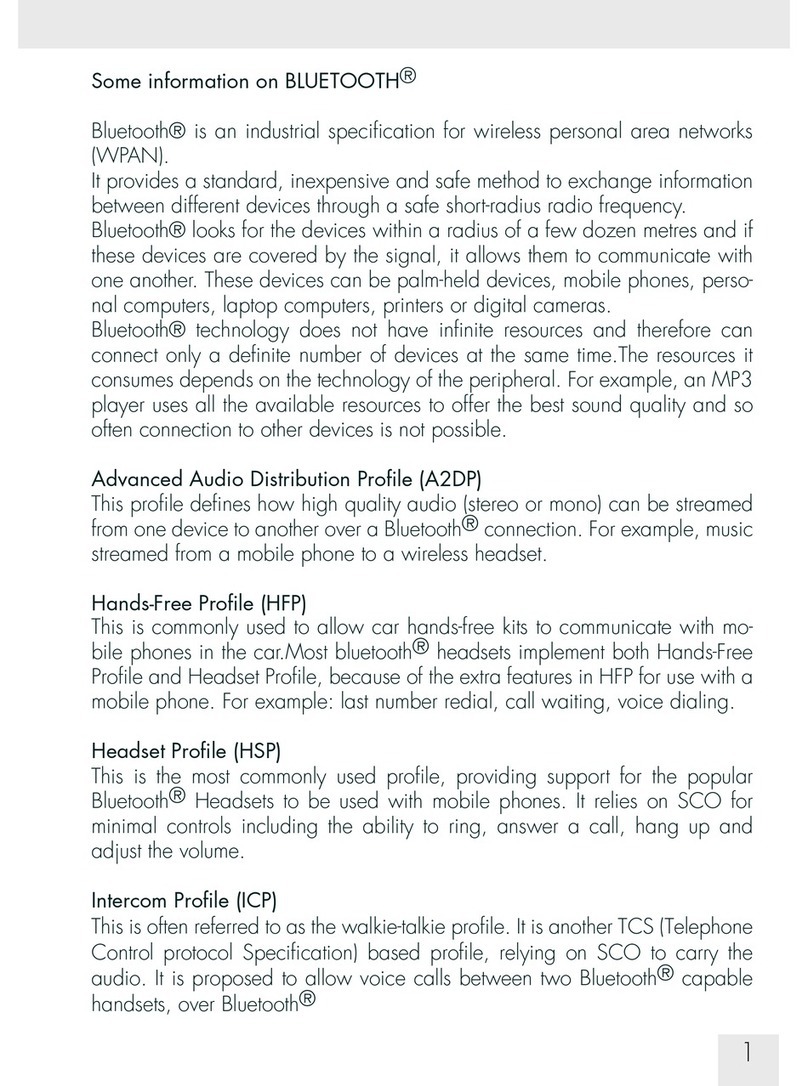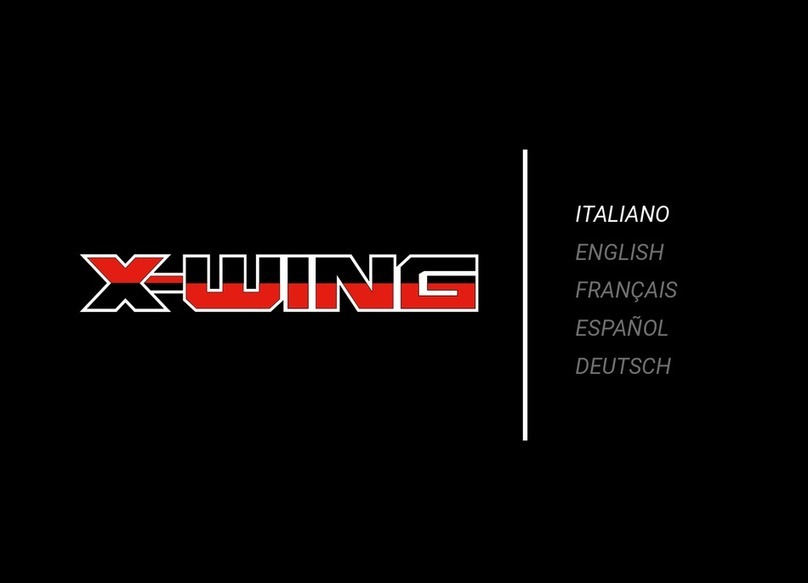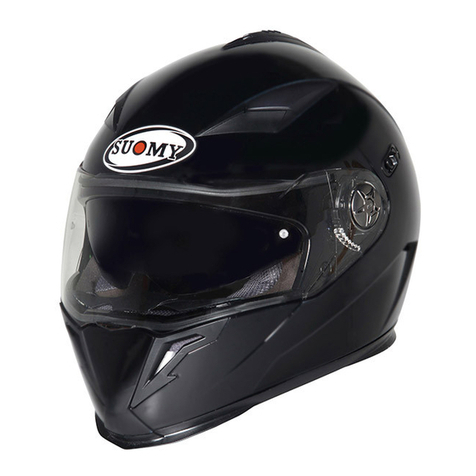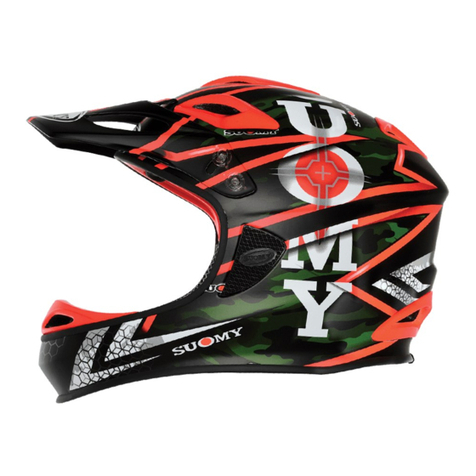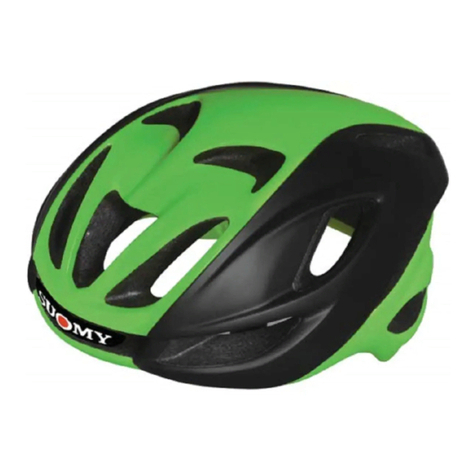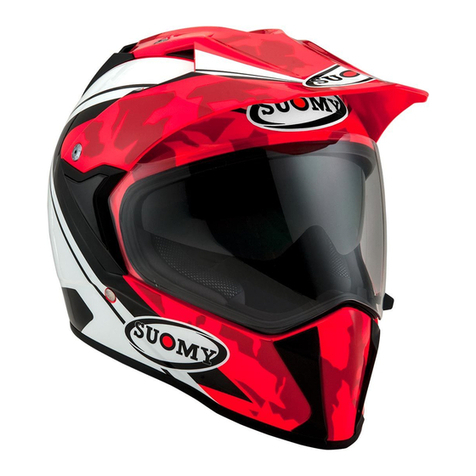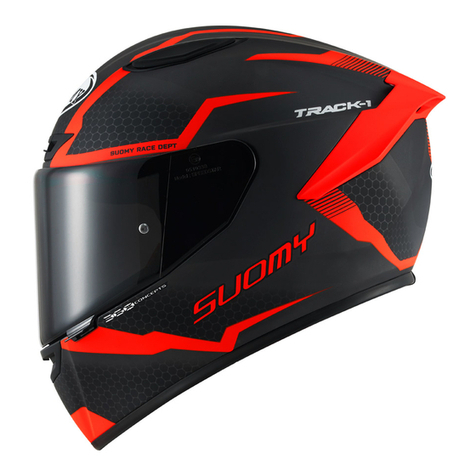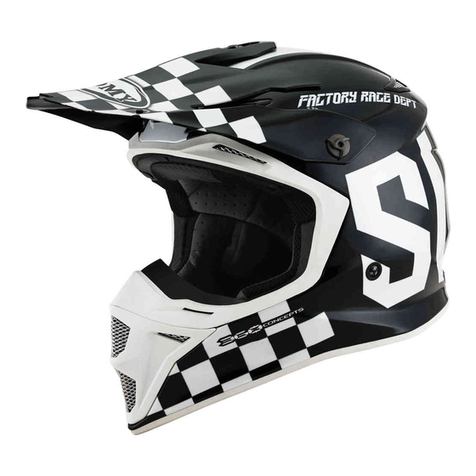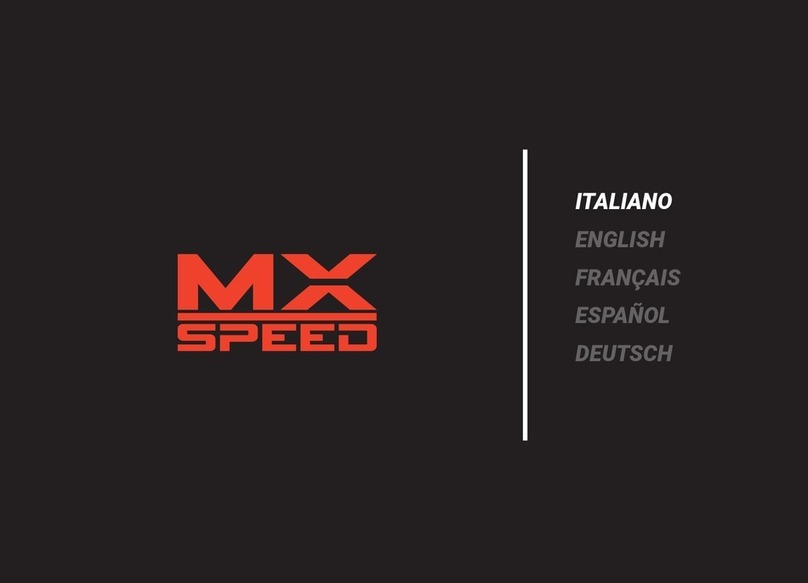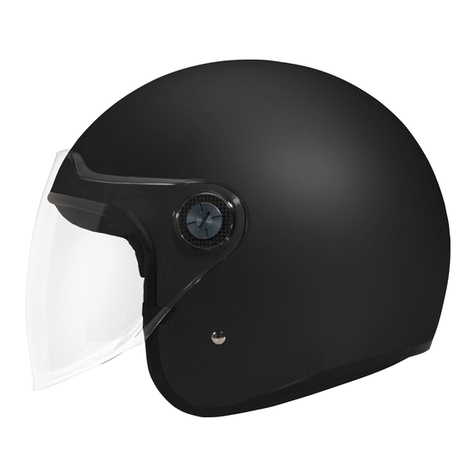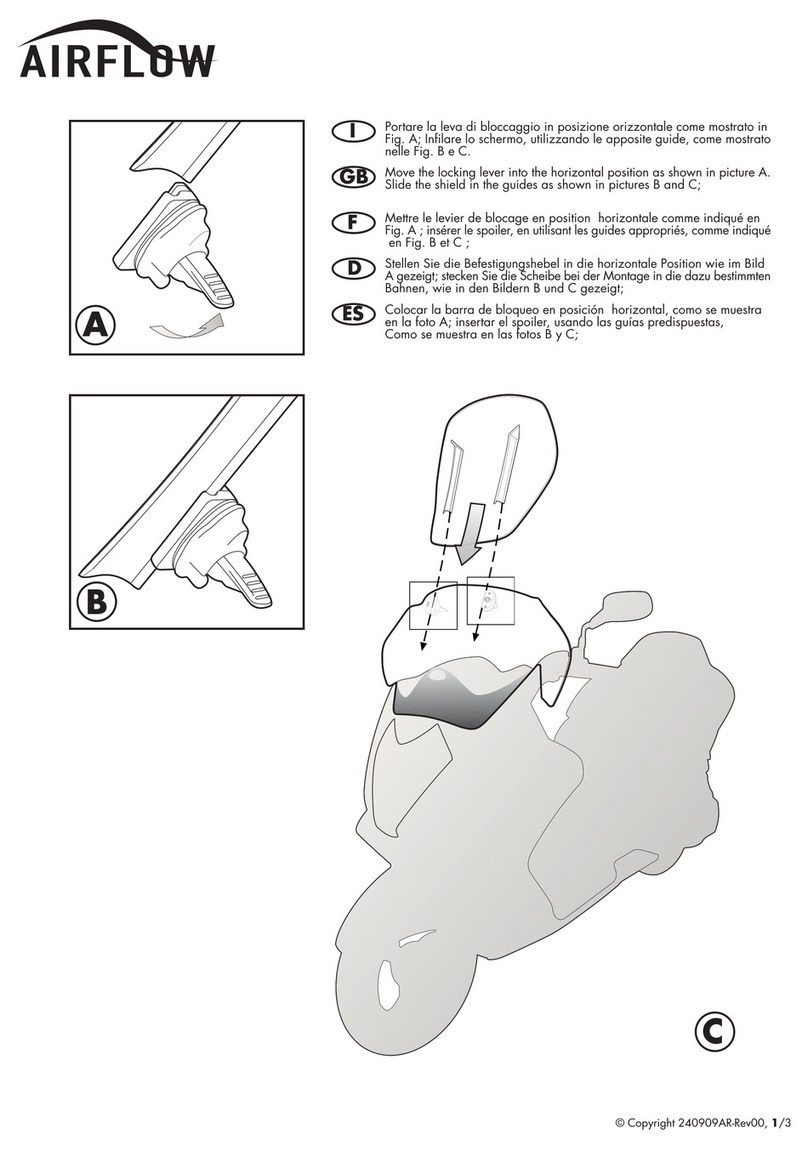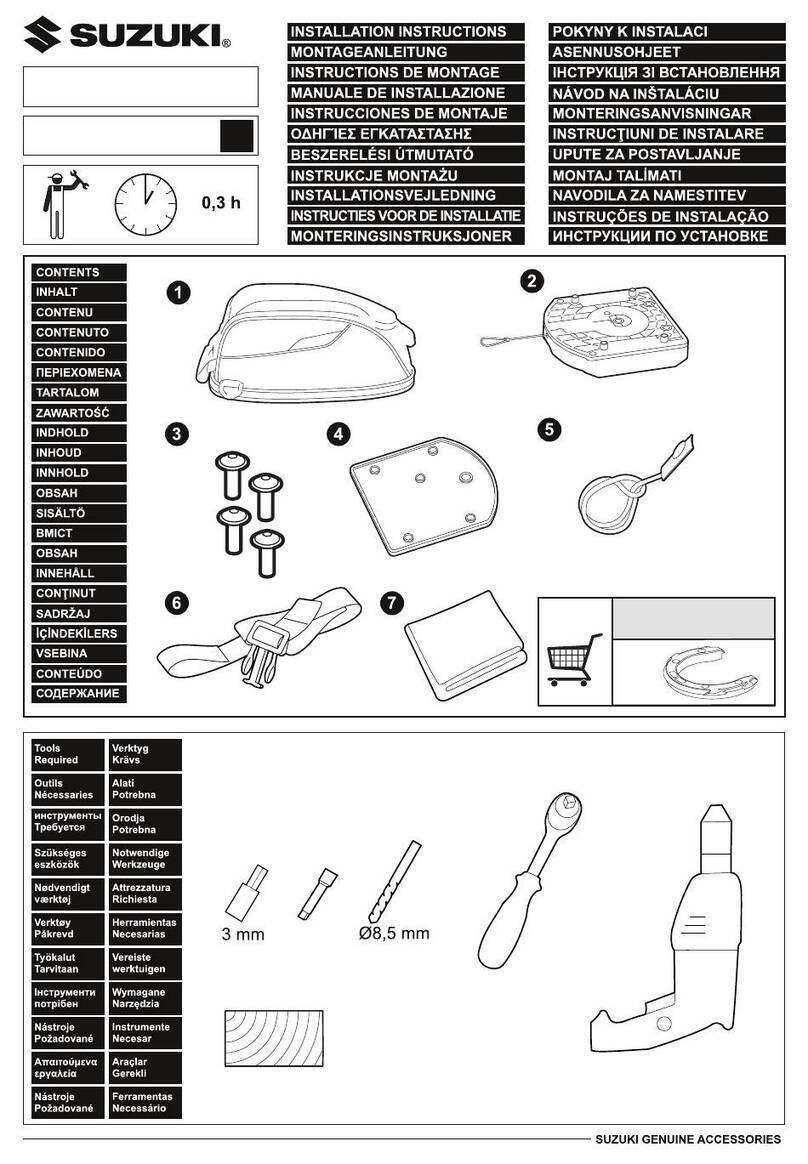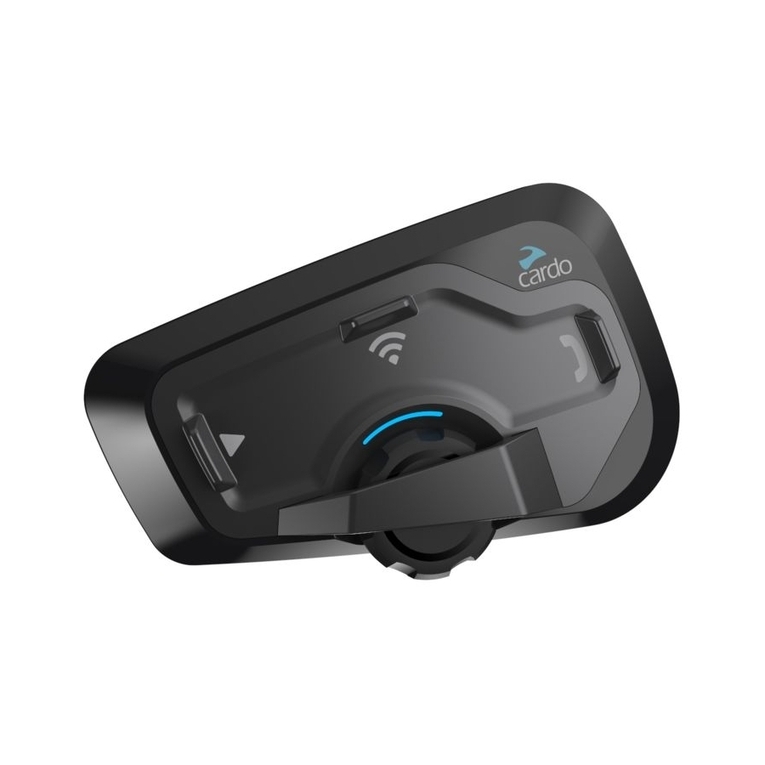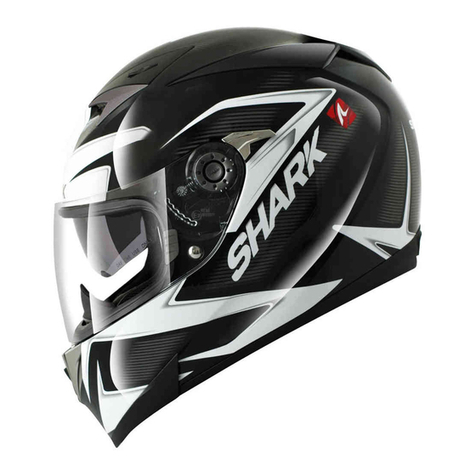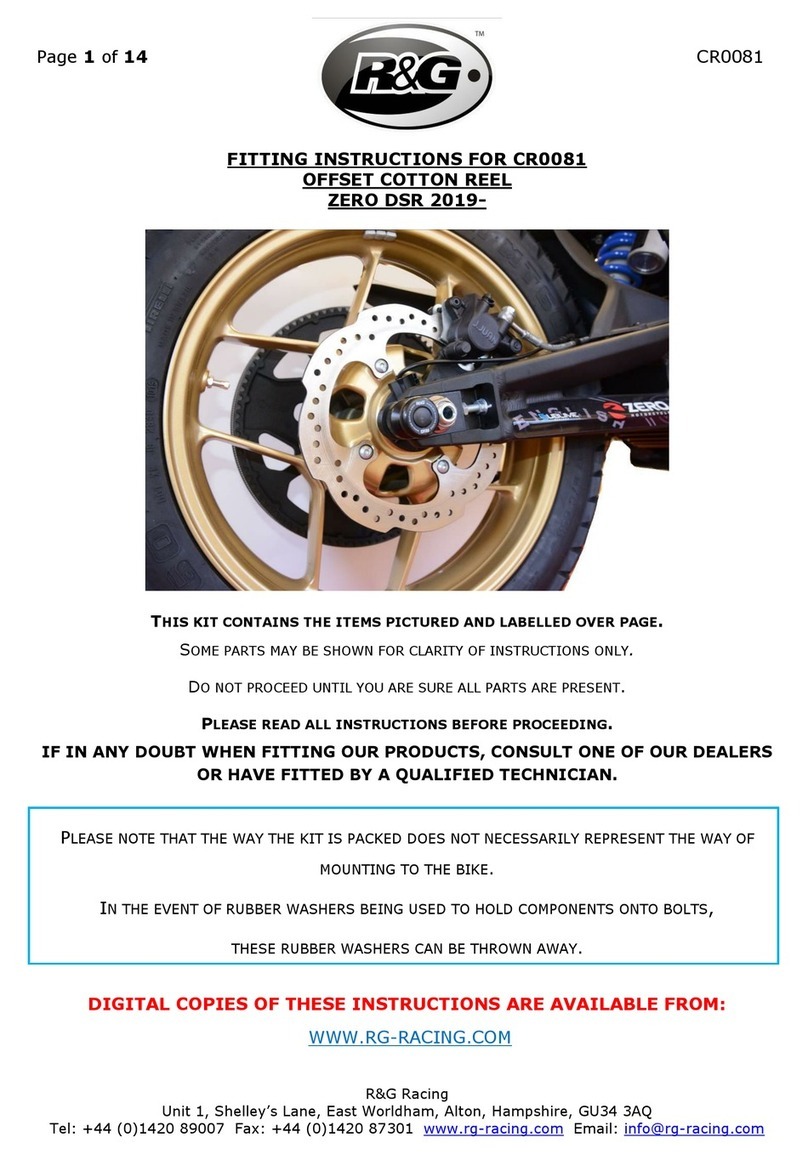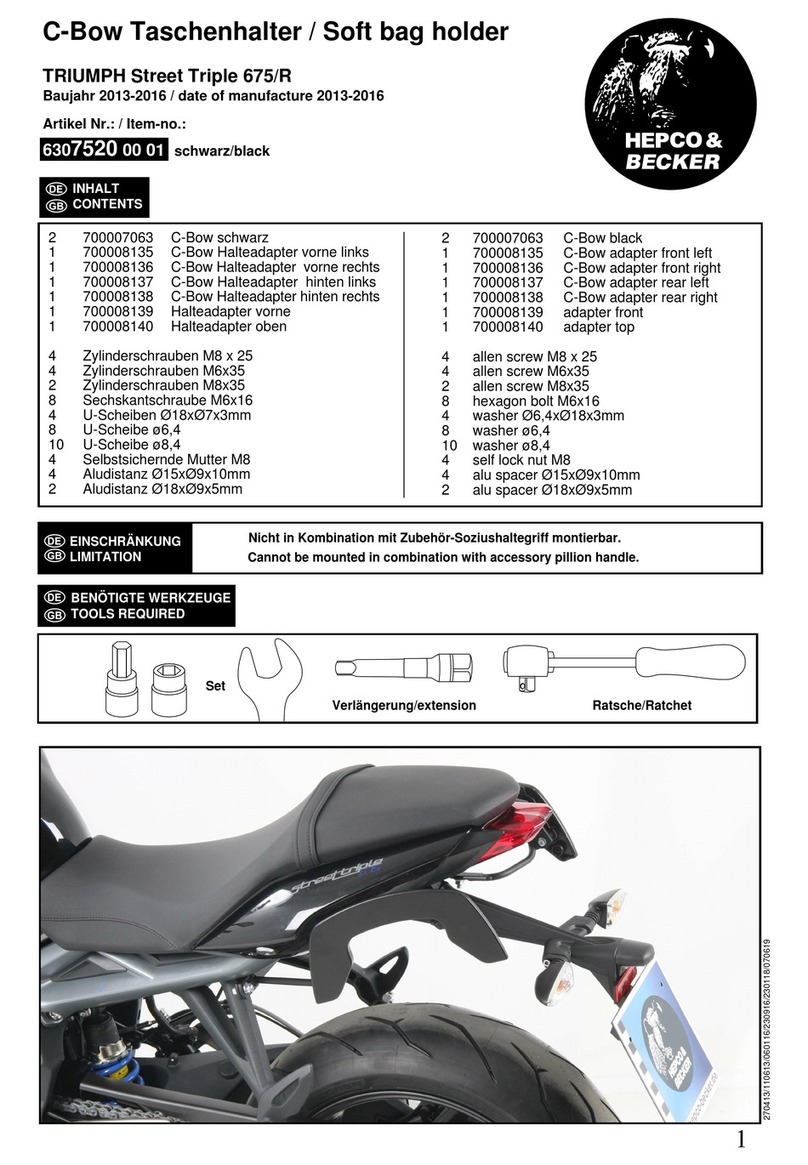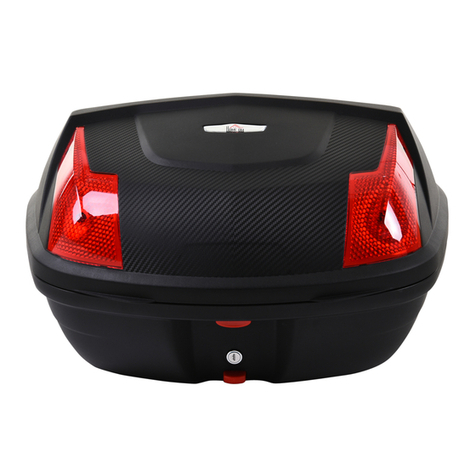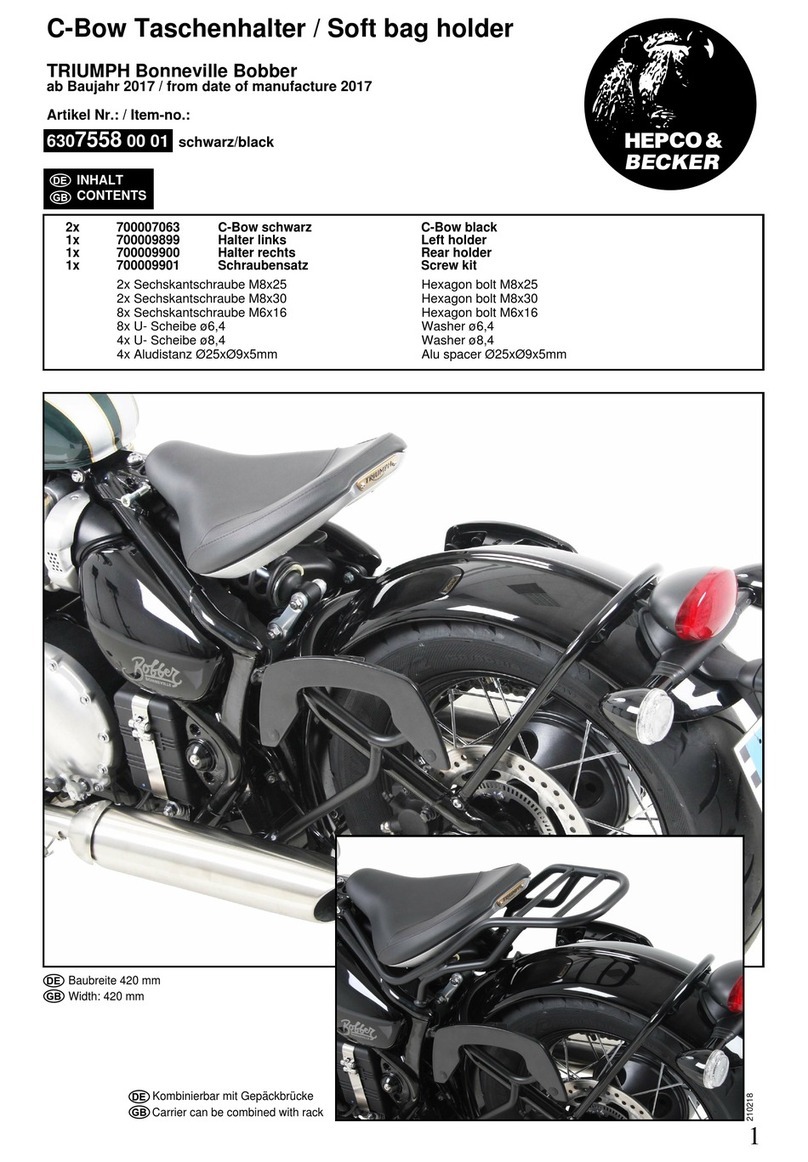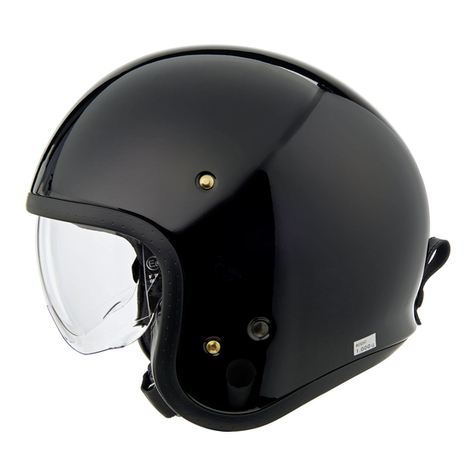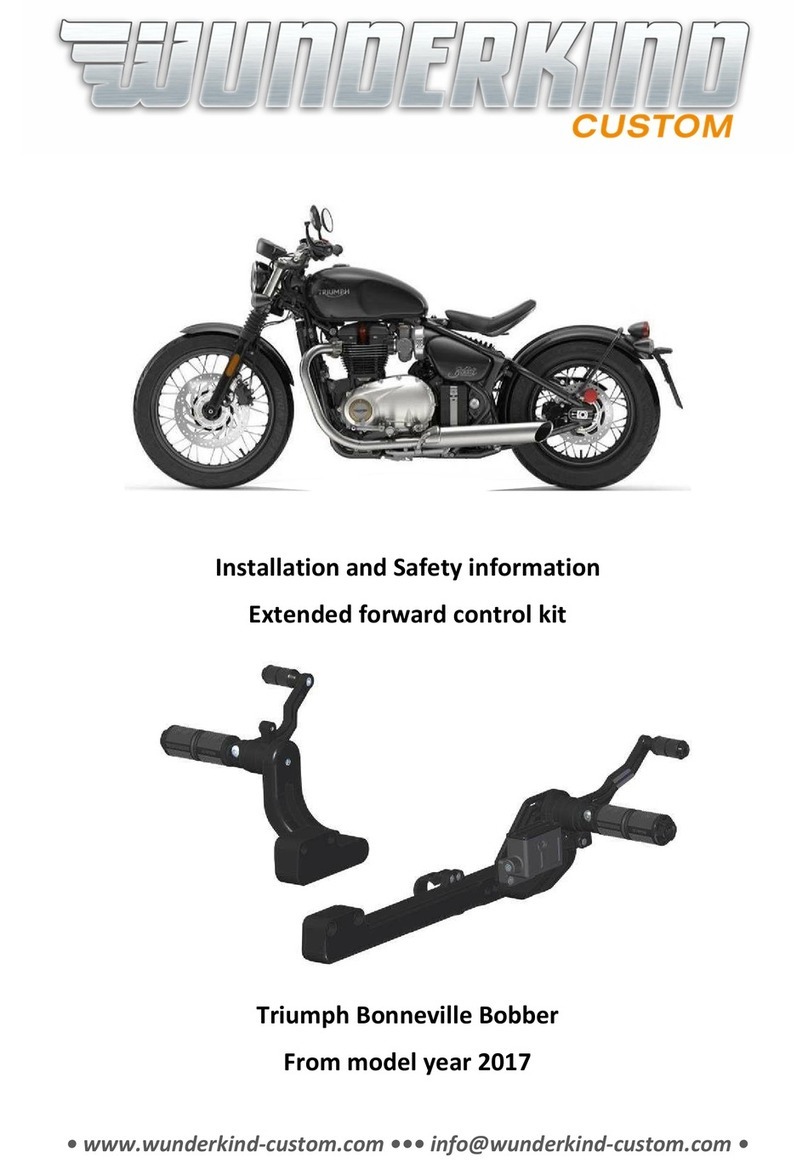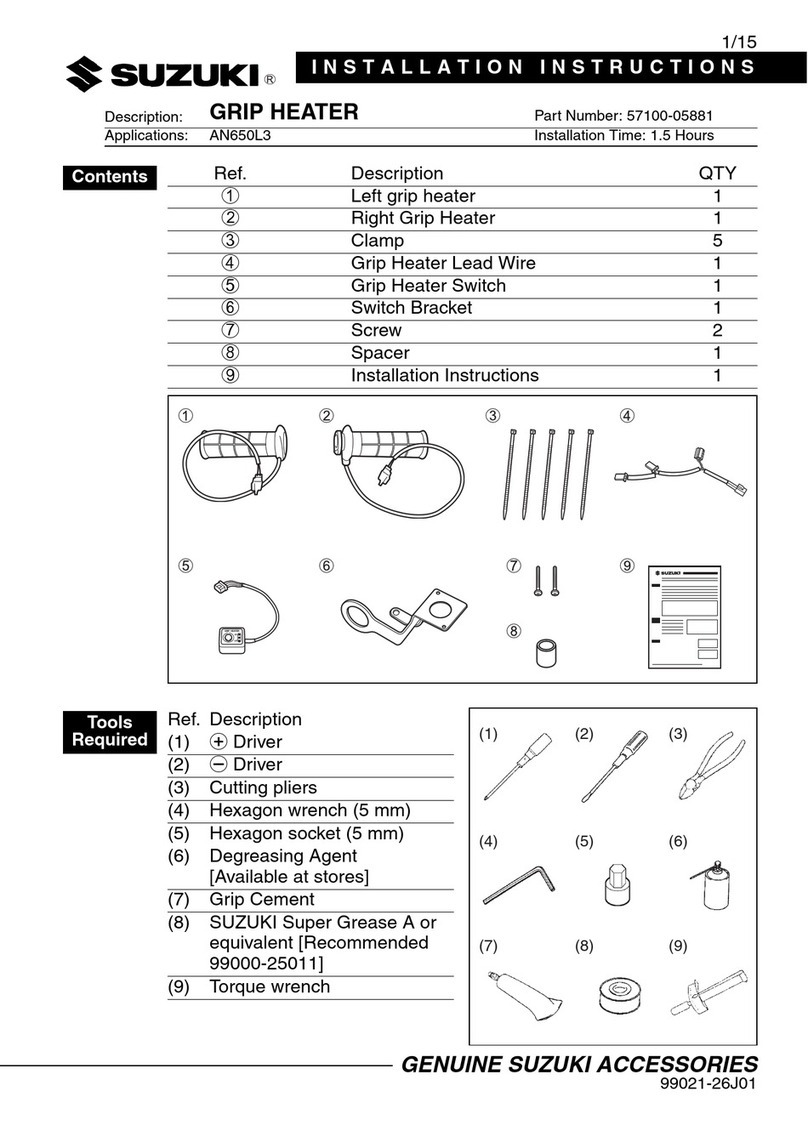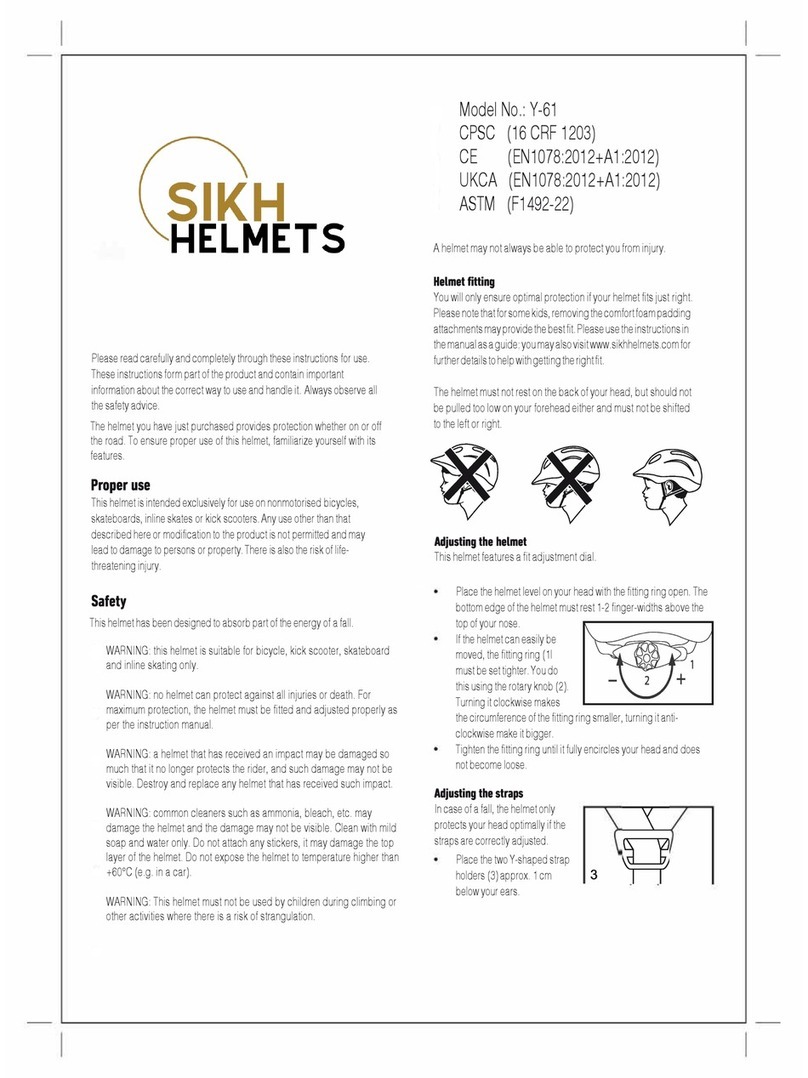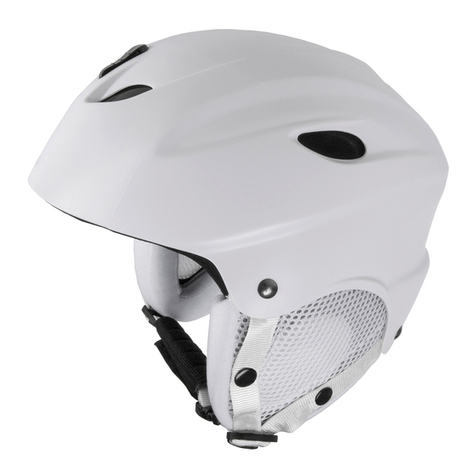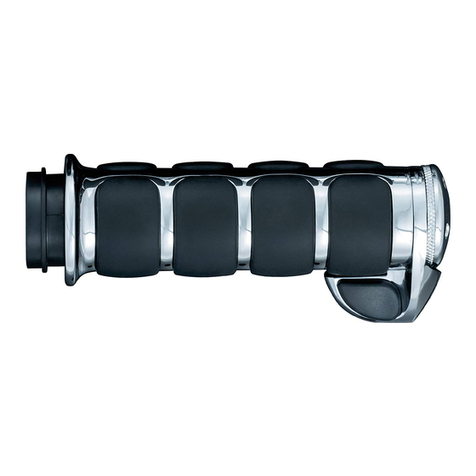
EN
The integrity of the shell and of the inside are essential to assure
maximum performances in terms of safety.
SR-GP was studied to absorb crashes through a partial destruction
of the shell or some of its parts that could be damaged after a crash
even if it is not readily visibly. If the helmet suffers further stress it
might not be able to offer the maximum level of protection.
Do not use a helmet that suffered severe blows even though the
damage is not readily visible; if the helmet is damaged it must
be replaced. It is extremely dangerous to modify the helmet by
sticking or gluing anything on it. Do not cut or punch the helmet’s
shell, do not insert screws or paint it.
Do not change the internal lining of the helmet, particularly never
cut or change the inside polystyrene padding: changes to the
shape of the internal polystyrene shell can affect the safety features
of the helmet.
Damaged visors may limit visibility especially at night and must be
immediately replaced with regularly certified visors according to
the certification regulations in force.
Do not apply paint and/or adhesives on the visor. Do not remove
homologation label from the visor.
Only use original Suomy accessories and spare parts or those
specifically indicated by Suomy for the specific model: this is the
only way to assure reliability, safety and compatibility with the helmet
used.
The use of non original components and/or accessories make the
warranty void (see warranty conditions on page 35) and can affect
the safety requirements.
Use
Maintenance
To clean the shell use water and mild soap; let the helmet dry
at room temperature, never expose it to heat.
Cleaning the helmet with solvents, petrol by-products or chemical
substances, the application of stickers or paint could affect the
structure of the shell, thus affecting the safety features, even if the
damage is not readily visible. Do not paint, or apply stickers, petrol
or other chemical solvents to this helmet.
To clean the internal lining, just hand wash at 30°C maximum,
exclusively using mild soap.
To clean the fixed internal lining use a damp cloth and mild soap.
The fabric lining, even if they are part of removable elements, must
not be soaked in water when they are applied to or paired with an
internal padding, either rigid or soft.
Dry the pieces at room temperature, away from sunlight and without
exposing them to heat.
Periodically clean the «D-Rings» system with warm water and mild
soap. Do not use solvents or chemical detergents and do not
lubricate.
Clean the visor as follows:
1. Remove the visor from the helmet (see paragraph VISOR -
removal)
2. Rinse it with running warm water only on the outside.
3. Wash the visor with water and mild soap using a soft cloth to
remove the dirt.
4. Rinse with warm water.
5. Dry with a soft and delicate cloth
6. Put the visor back on the helmet (see paragraph VISOR –
Assembly)
Verify that the cloth used does not leave any traces that could stick
to the surface of the visor after washing. Do not use paper cloths to
clean and dry the visor.
Do not expose the visor to heat to dry.
Do not use particular detergents (prepared solutions, creams,
22
